The Role of Lighting in Sleep Hygiene - How to Design a Bedroom for Optimal Rest
Sleep is the cornerstone of good health, yet many people struggle to get the rest they need. From boosting your immune system to improving mental clarity, quality sleep is essential for your overall mental health. However, achieving that deep, restorative sleep often hinges on more than just the hours you spend in bed. This is where sleep hygiene—a collection of practices that set the stage for a good night's rest. Among these, the role of lighting in your bedroom is one of the most critical yet overlooked factors.
The Science of Light and Sleep
Natural Light vs. Artificial Light
The relationship between light and sleep is deeply rooted in our biology. Natural light, particularly sunlight, plays a vital role in regulating our sleep-wake cycle, also known as the circadian rhythm. Exposure to natural light during the day, especially in the morning, helps to synchronize this internal clock, signaling to our body when it’s time to be awake and when it’s time to rest. This natural light exposure enhances alertness, mood, and overall energy levels throughout the day, ultimately contributing to a more restful sleep at night.
On the other hand, artificial light, which is abundant in our modern environments, can have a disruptive effect on sleep, particularly when it comes to blue light. Emitted by screens from smartphones, tablets, and computers, as well as some energy-efficient lighting, blue light mimics daylight and can trick the brain into thinking it’s still daytime. This leads to suppressed melatonin production, the hormone responsible for inducing sleep, making it harder to fall asleep and stay asleep. Reducing exposure to artificial light, especially in the hours leading up to bedtime, is crucial for maintaining healthy sleep patterns.
The Role of Different Light Colors and Intensities
Not all light is created equal when it comes to sleep quality. The color temperature and intensity of light can have varying effects on how easily you drift off to sleep and the quality of sleep you get. Warm light, typically in the range of 2700K-3000K (Kelvin), is more conducive to relaxation and sleep. This type of light mimics the natural hues of sunset, signaling to your body that it’s time to wind down. Incorporating warm light in your bedroom, especially through bedside lamps or dimmable fixtures, can create a calming atmosphere that promotes restfulness.
In contrast, cool light, which is higher in color temperature (above 5000K), is more stimulating and is better suited for daytime activities. It enhances alertness and concentration, making it ideal for workspaces but detrimental when used in the bedroom at night. Additionally, light intensity plays a significant role—bright lights should be avoided in the evening as they can disrupt the body’s preparation for sleep. Instead, opt for lower-intensity lighting that helps ease the transition from wakefulness to sleep.
Circadian Rhythm and Lighting
Your circadian rhythm, often referred to as your internal clock, is intricately linked to the lighting in your environment. This rhythm regulates the timing of sleepiness and wakefulness throughout the 24-hour day, and it’s heavily influenced by light exposure. In the morning, exposure to bright, natural light helps to reset the circadian clock, promoting alertness and setting the stage for a productive day. This natural signal tells your body it’s time to be awake, helping to regulate your energy levels and mood.
Designing a Bedroom for Optimal Lighting
Choosing the Right Lighting Fixtures
The foundation of a sleep-friendly bedroom begins with selecting the right lighting fixtures. Dimmable lights are an excellent choice, as they allow you to adjust the brightness according to the time of day and your specific needs. For instance, a ceiling fixture with a dimmable option can provide bright light during the day and a softer, more relaxing ambiance in the evening. Bedside lamps are another essential component, offering focused lighting for nighttime reading without illuminating the entire room. Look for lamps that have warm light bulbs (around 2700K) to create a cozy and restful environment.
Adjustable lighting options are crucial because they provide the flexibility to control the intensity and direction of light. This adaptability helps maintain a consistent and soothing atmosphere that supports your sleep hygiene. Consider incorporating wall sconces with adjustable arms or floor lamps with variable settings to offer more control over your bedroom lighting, ensuring it meets your needs throughout the day and night.
Optimizing Natural Light in the Bedroom
Natural light plays a key role in regulating your circadian rhythm, so it’s important to optimize its presence in your bedroom. Start by arranging your bedroom layout to allow as much natural light as possible. Position your bed near a window to maximize exposure to morning sunlight, which helps reset your internal clock and promotes wakefulness at the start of the day.
To control light at night and prevent early morning sunlight from disturbing your sleep, blackout curtains or shades are highly recommended. These window treatments block out external light, creating a dark environment that is conducive to sleep. Additionally, consider using sheer curtains during the day to filter sunlight without completely blocking it, allowing your bedroom to be filled with natural light while maintaining privacy.
Smart Lighting Solutions for Better Sleep
Incorporating smart lighting technology into your bedroom design can further enhance your sleep quality. Smart bulbs and lighting systems that offer automated dimming and color adjustments allow you to tailor your bedroom lighting to your circadian rhythm. For example, circadian lighting systems gradually shift the color temperature and brightness throughout the day, mimicking the natural progression of sunlight. In the morning, these lights can gently brighten to wake you up naturally, while in the evening, they can dim to signal to your body that it’s time to wind down.
Smart bulbs also offer the convenience of controlling your lights via smartphone apps or voice assistants, enabling you to adjust your lighting without leaving the comfort of your bed. Some smart lighting systems even sync with your sleep patterns, automatically adjusting the light intensity and color based on the time you typically go to bed and wake up. These advanced features can create a seamless lighting experience that supports your sleep hygiene, ultimately leading to more restful nights and refreshed mornings.
Practical Tips for Better Sleep Hygiene Through Lighting
Creating a Relaxing Pre-Bedtime Lighting Routine
Establishing a pre-bedtime lighting routine is one of the most effective ways to signal to your body that it’s time to wind down for the night. The goal is to create an environment that gradually transitions from the brightness of the day to the calmness of night. Start by dimming the lights in your home about an hour before you plan to go to bed. This reduction in light intensity mimics the natural decline in daylight, helping to cue your body that it’s time to start producing melatonin, the sleep hormone.
Consider incorporating warm, soft lighting in your evening routine. Use bedside lamps or wall sconces with dimmable, warm-colored bulbs to create a soothing atmosphere. Avoid overhead lights during this time, as they tend to be too bright and can disrupt the winding down process. By consistently lowering the lighting in your environment each night, you train your body to associate dim light with sleep, making it easier to fall asleep and stay asleep.
Avoiding Common Lighting Mistakes
Many people unknowingly sabotage their sleep by making common lighting mistakes in the evening. One of the biggest pitfalls is relying on bright overhead lights during nighttime hours. These lights can be overly stimulating and interfere with the body’s natural preparation for sleep. Instead, opt for lower-intensity lighting that creates a more calming environment.
Another common mistake is the use of electronics in bed. Devices like smartphones, tablets, and computers emit blue light, which can suppress melatonin production and trick your brain into thinking it’s still daytime. To minimize exposure to disruptive light sources, establish a rule of no screens at least 30 minutes before bedtime. If you must use devices, consider using blue light filters or apps that reduce blue light emission in the evening.
Integrating Lighting with Other Sleep Hygiene Practices
Lighting is just one component of a holistic approach to sleep hygiene, but it can greatly enhance the effectiveness of other practices. For example, combining dim lighting with calming activities like reading, meditation, or listening to soothing music can create a powerful pre-sleep routine that prepares both your mind and body for rest.
You can also integrate lighting with aromatherapy by using warm light sources in conjunction with essential oil diffusers. The combination of soft lighting and relaxing scents like lavender or chamomile can further promote a peaceful sleep environment. Additionally, consider pairing your lighting routine with temperature control—using a smart thermostat to slightly lower the room temperature as you dim the lights can create an ideal sleep setting.
Additional Resources
Recommended Reading
For those interested in diving deeper into the science of sleep hygiene and the impact of lighting on sleep quality, here are some valuable resources.
-
The Importance of Sleep Hygiene: A Comprehensive Guide by the Sleep Foundation. This article explores the various elements of sleep hygiene and provides actionable tips for improving your sleep environment.
-
The Effects of Light on Circadian Rhythms published in the National Institutes of Health’s database. This study delves into how different types of light affect our body’s internal clock and offers insights into optimizing light exposure for better sleep.
-
Blue Light and Sleep: What’s the Connection? by Harvard's Health Page. This article examines the impact of blue light on sleep and offers practical advice on how to mitigate its effects.
Product Recommendations
Creating the perfect sleep environment often requires the right tools. Here are some product suggestions to help you optimize your bedroom lighting for better sleep:
-
Smart Lights: Consider the Philips Hue White Ambiance smart bulbs, which allow you to adjust the color temperature and brightness throughout the day. These bulbs can be programmed to simulate natural daylight in the morning and transition to warm, dim light in the evening.
-
Blackout Curtains: The NICETOWN Thermal Insulated Blackout Curtains are a great choice for controlling light in your bedroom. They block out 85%-99% of light, helping you create a dark environment that is ideal for sleep.
-
Bedside Lamps: The Himalayan Glow Natural Salt Lamp not only provides a warm, soothing light but also purifies the air, creating a tranquil atmosphere conducive to relaxation and sleep.
Professional Advice
If you’re looking for more personalized guidance, consulting with a sleep specialist or interior designer can provide tailored recommendations based on your specific needs and environment too.
-
Sleep Specialists: These professionals can offer insights into how your current sleep habits and environment are affecting your sleep quality and provide personalized strategies to improve it. Many sleep clinics offer consultations that can help you fine-tune your sleep hygiene.
-
Interior Designers: An interior designer with experience in wellness-focused design can help you create a bedroom that not only looks good but also supports healthy sleep. They can recommend the best lighting solutions, color schemes, and furniture arrangements to enhance your sleep environment.












































































































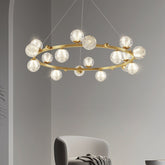

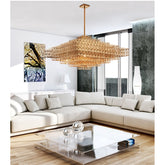

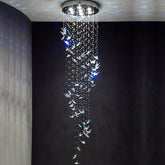

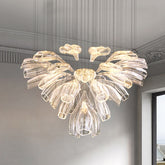

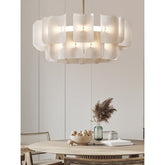

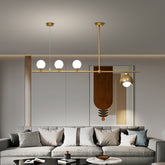

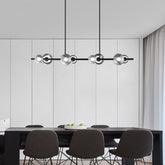

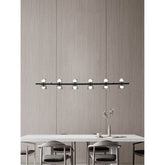

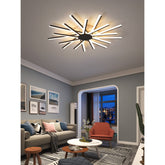

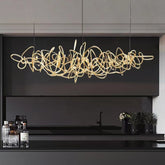


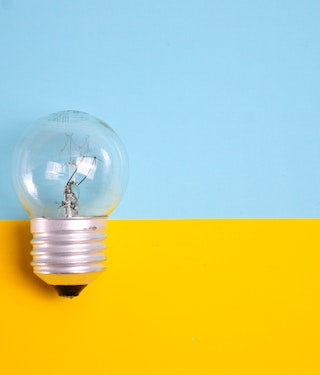

1 comment
5bl77f